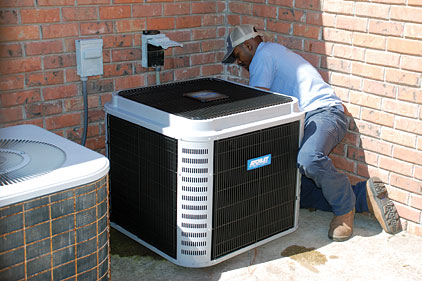Educating Contractors
When asked if he thought the U.S. Environmental Protection Agency announcement regarding reduced allocations of virgin HCFC-22 and the resulting price increases in early 2012 will spur a step up in use of reclamation services by contractors, Ken Bodwell of Innovative Service Solutions of Orlando, Fla., said, “I absolutely do.”
He explained, “We have been reclaiming R-22 for several years now and after it’s cleaned, we bank it with the reclaim service. It makes sense and it offers a lower cost when purchasing R-22.”
Bodwell added, “This latest scare prompted us to confront our major industrial clients who utilize R-22 in the process. Several were unaware of the issue but all were anxious for us to provide conversion alternatives for budgeting purposes. As contractors, we need to start the education process with the end users.”
But there also continues to be a need to educate contractors in light of the small percentages of R-22 in the field coming back for reclaim.
“The last I heard, only 11 percent of the R-22 was being reclaimed,” Bodwell noted. “That’s pretty bad. We will never have 100 percent because of leaks and damage to HVACR equipment, but 11 percent is much too low.
“I think there is still a fair number of technicians and contractors that have not embraced reclaiming or find it too time consuming. There is no question that when equipment is being replaced, extra time and planning must be considered for recovery of the remaining refrigerant. There is certainly the cost of the recovery equipment including the tanks. Sadly, my gut says it’s just laziness and lack of commitment on the contractor’s part.”
Considering Cost
To contractors who balk at the cost of submitting to reclaim, Bodwell said, “These incentives are in place, but it takes educated, licensed contractors to take advantage. I think because of the high unemployment, we are experiencing an increase in unlicensed contractor activity and weekend installations to supplement incomes — all of which translate into unpermitted, low-cost, shortcut installations.”
Tom Borowske, vice president of operations for Environmental Conditioning Systems, Mentor, Ohio, said, “Technicians and contractors are recovering now. What happens to the refrigerant that is recovered is somewhat in question.” He described stumbling blocks as “time, cost, and related overhead.”
Regarding incentives, he said, “There are buy-back programs out there now. Some involve taking it back as long as you buy a pallet of refrigerant or giving you free clean recovery cylinders.”
Ann Kahn, president of Kahn Mechanical Contractors, Dallas, said, “I would hope it [the EPA action] will step up the use of reclamation services and reclaimed refrigerant, but you never know what goes on in the minds of some contractors. What more can we ask than to be paid for turning in refrigerant?”
She added, “If contractors aren’t sending back the refrigerant for reclamation, what are they doing with it? Is it too much trouble to transfer refrigerant to large canisters for sale to companies that pay for used refrigerant and clean it for resale?”
Butch Welsch, president of Welsch Heating & Cooling Co., St. Louis, said he thought contractors and technicians would embrace reclamation “in the long run, probably not in the short run.”
The reason, he explained, is a basic resistance to change. “It’s hard to get technicians to change their ways. The fact is that the increasing price of virgin R-22 will probably, in the long run, be the best incentive.”
At present, the obstacle, he said, is “the hassle of handling it [refrigerant targeted for reclaim] and all the steps necessary to get it back, get it to the reclamation center, etc. Just the price of gasoline for transporting it has nearly doubled in the last couple of years.”
Despite concerns about a lack of contractor commitment and the hassle, these contractors confirmed that reclamation is worth it.
Publication date: 04/02/2012







